Celebrating 30 years of the Design Museum
Made in 1989
2019 marked 30 years since the Design Museum originally opened its doors in a converted banana warehouse in Shad Thames, among the once economically vibrant London docklands.
Take a look back at the museum’s founding history in the 1980s to present day – from twenty-five years of exhibitions at Shad Thames to the future in its new home in Kensington.
'Asked to pick the single most rewarding achievement in my long design career so far, I would not hesitate to say firmly the Design Museum in London.' – Sir Terence Conran
#madein1989
The Boilerhouse Project
The museum's beginnings were in the Boilerhouse Project, an independent project at the V&A museum financed by the Conran Foundation and directed by Stephen Bayley.
Exhibitions included:
- Art & Industry (1982): The project's first exhibition made the case for the study of industrial design. The dominant feature of the exhibition was a petrol pump designed by Eliot Noyes, which remains an important part of the Design Museum’s collection.
- Memphis Milano in London (1982): The first exhibition to showcase the work of the radical Memphis group in London.
- Sony Design (1982): The earliest in-depth examinations of one of the most important companies in the world.
- Issey Miyake Bodyworks (1985): The first exhibition to bring the Japanese designer's intricate tailoring to the UK. The immaculate, white-tiled gallery was pumped full of black foam rubber, out of which rose mannequins wearing Miyake’s garments.
- Coke! (1986): By far the most popular exhibition to be held at the Boilerhouse Project; during the show’s run, Coke! was claimed to attract enough visitors to fill the 7 miles of galleries in the V&A combined.
The project's success proved that there was a public appetite for contemporary design.
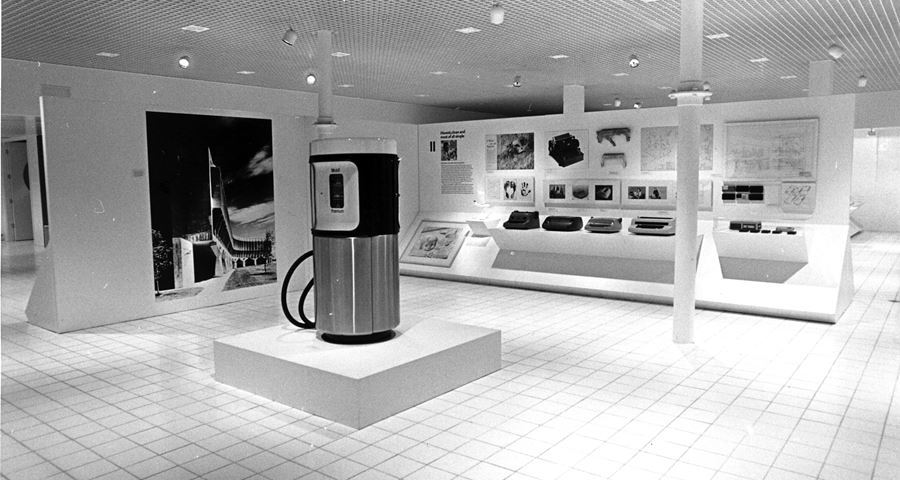
1982 Art & Industry Boilerhouse Project exhibition
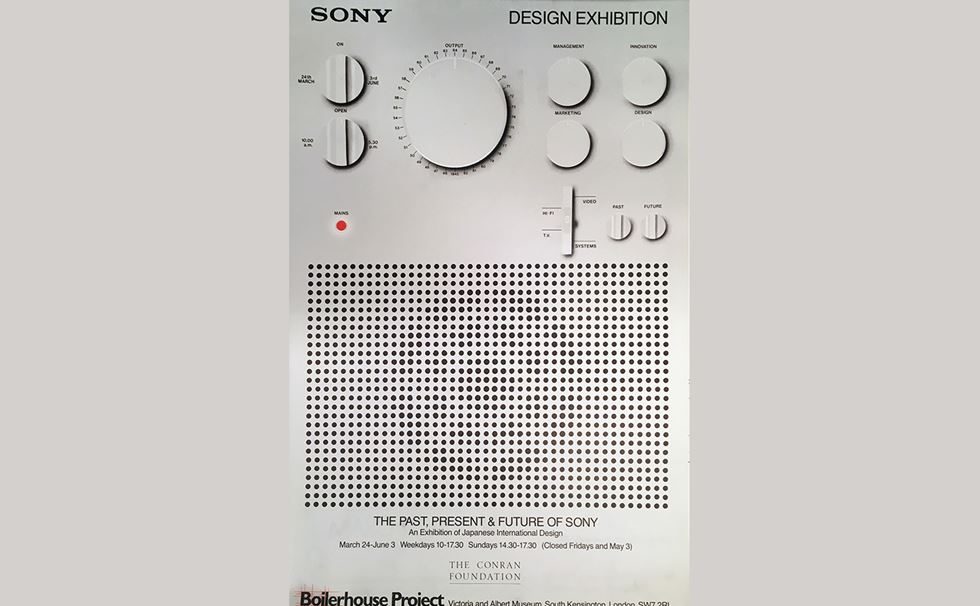
Design poster for 1982 Sony Boilerhouse Project exhibition
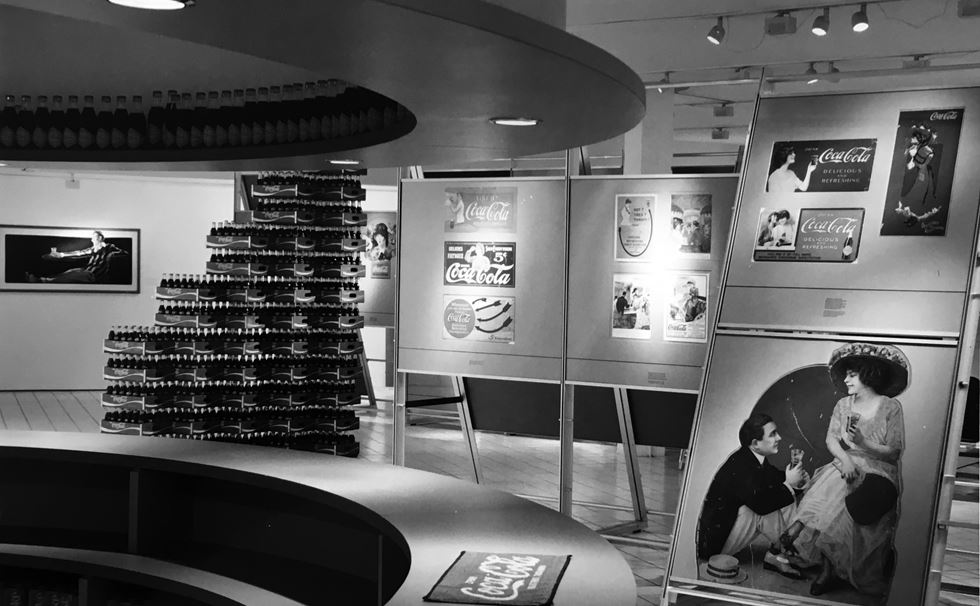
1986 Coke! exhibition
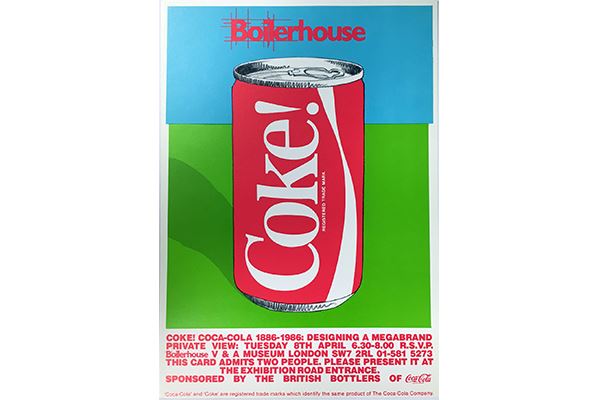
1986 Coke! poster
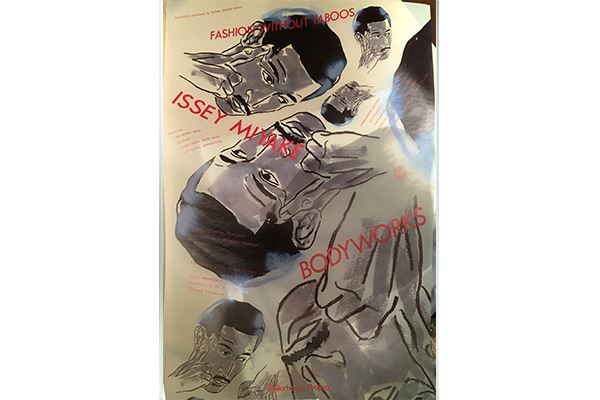
1985 Issey Miyake Bodyworks poster
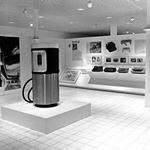
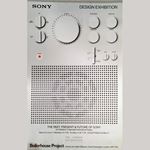
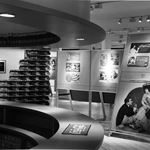
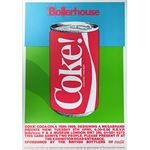

Shad Thames
In 1981 Sir Terence Conran led a consortium that won a bid to redevelop an 11 acre site at Butler’s Wharf, consisting mainly of Victorian warehouses that had fallen into disuse. Around 1986 a building site was earmarked as the new home for the Design Museum.
The site was originally a 1940s banana-ripening warehouse. It was most recently a store for South Korean military supplies before its conversion into Design Museum.
The architect was Stuart Mosscrop of Conran Roche, who had created the shopping centre at Milton Keynes a decade before. The interiors were designed by Paul Williams and Alan Stanton, also of Conran Roche.
It was deliberately designed to be a homage to the International Style of the 1930s as a sort of Bauhaus-on-Thames. Notable for its white walls, marble floors, generous balconies and glass-brick walls which let in lots of light, it was very much a statement of forward-looking progress, in contrast to the Victorian warehouses of the surrounding area.
The new museum was opened by Margaret Thatcher on 5 July 1989. On opening night guests ate miniature packets of fish and chips wrapped in the Financial Times.
Exhibitions included:
- Commerce & Culture (1989): The first exhibition to be held at Shad Thames, Commerce and Culture set the agenda for the Design Museum to come.
- Eileen Gray (1992): One of the earliest exhibitions to showcase the work of pioneering designer Eileen Gray, bringing the Irish designer to wider public attention.
- Is Starck a Designer? (1993): The maverick designer Philippe Starck is best known for his striking approach to product design. The Design Museum was one of the first organisations to examine Starck’s unconventional approach.
- Conran Foundation Collection (started 1993, ran until 2004): This programme, which ran between 1993 and 2004, invited designers to choose items that would enter the museum’s collection. The first collector was Ross Lovegrove, who chose a wide range of items including Oakley sunglasses, an Apple Newton message-pad and a can of Gillette shaving gel.
- The Power of Erotic Design (1997): The show that broke all previous visitor records. The exhibition was more like an installation than an exhibition, with accompanying soundtrack to match. Despite the titillating name, the exhibition was an important examination of how designers have used eroticism in their work.
- Ronan + Erwan Bouroullec (2002): The French duo are responsible for some of the most original designs of the twenty-first century. The Design Museum was amongst one of the first organisations to spot their work and to give them a platform.
- Manolo Blahnik (2003): The first ever exhibition devoted to Manolo Blahnik, adored by supermodels and Sex and the City fans alike.
- Designer of the Year (2003): The inaugural Designer of the Year competition. The inaugural winner was Jony Ive, senior vice-president of industrial design at Apple.
- Formula One (2006): A glimpse into a famously secretive industry, this exhibition allowed the public to examine the design innovations at the heart of the sport for the first time.
- Zaha Hadid - Architecture and Design (2007): The first exhibition to showcase the work of Pritzker-prize winning architect Zaha Hadid.
- Designs of the Year started (2008): The inaugural Designs of the Year competition. The winner was the One Laptop Per Child project, designed by Yvés Behar of Fuseproject.
- Hussein Chalayan (2009): Combining contemporary fashionable clothes with an intriguing vision of the future, this was the first comprehensive presentation of Chalayan’s work in the UK.
- Christian Louboutin: 20 Years (2011): The first UK retrospective of iconic French shoe designer Christian Louboutin, best known for the instantly recognisable glossy red soles of his shoes.
- Hello, My Name is Paul Smith (2013): Only a handful of designers have had more than one exhibition at the Design Museum. Paul Smith is one of them. This show broke all visitor records at Shad Thames, and is the most successful fashion touring show.
- The Future is Here: A New Industrial Revolution (2013): In a highly experimental move, the exhibition offered audiences the opportunity to witness ‘live’ production – ranging from 3D printing to robotic construction.
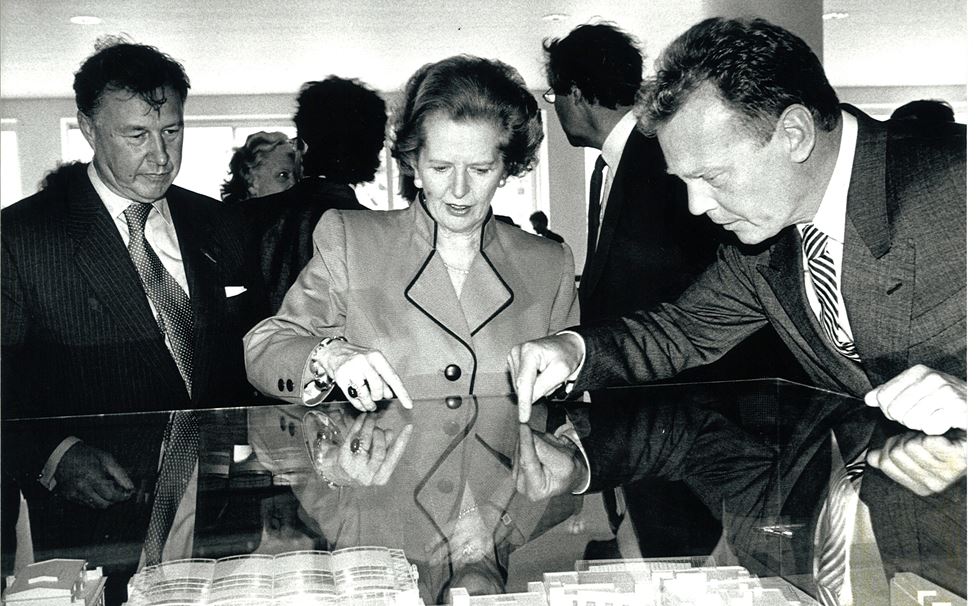
Margaret Thatcher at the Shad Thames opening
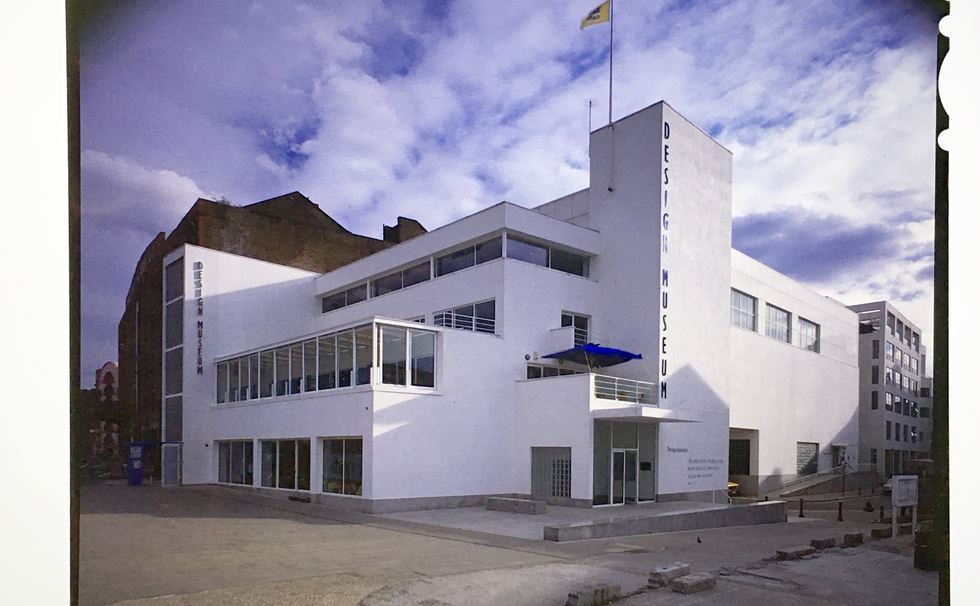
Shad Thames building in 1989
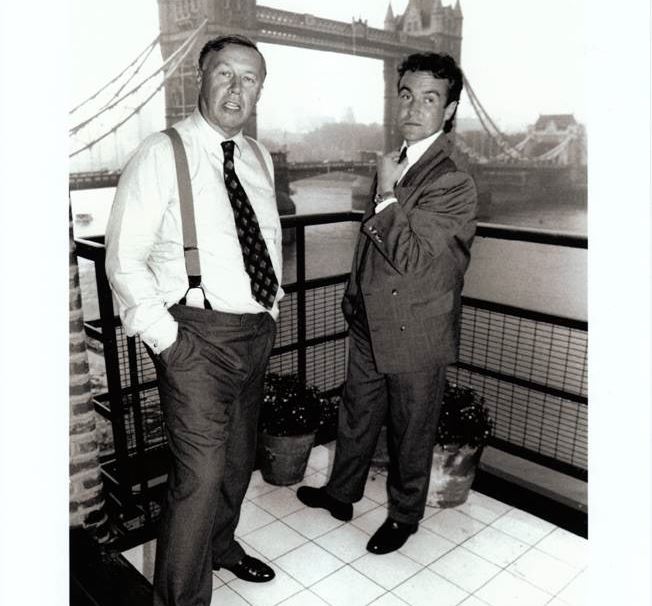
Sir Terence Conran and Stephen Bayley, first Director of the Design Museum
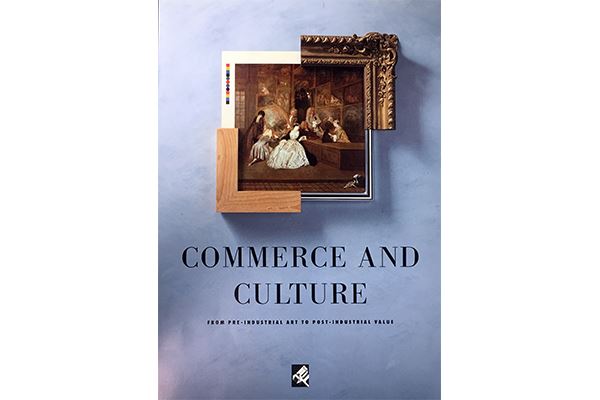
1989 Commerce & Culture exhibition poster
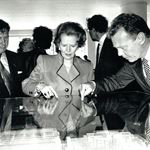
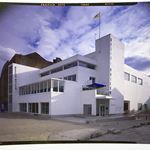
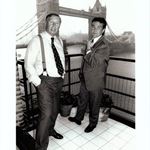
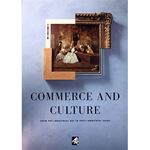
Moving to Kensington
Following a long search for larger premises to expand its activities, in 2008 the Design Museum selected the former Commonwealth Institute, a 1960s building in Kensington High Street, West London, as its new home.
The unique landmark, a Grade II listed building had stood vacant for over a decade, was transformed by a design team led by John Pawson who made the building fit for a 21st century museum, whilst at the same time retaining its unique spatial quality.
The Design Museum worked with John Pawson on the interior fit out of its building. OMA were responsible for the overall master plan and in conjunction with Allies and Morrison for the refurbishment of the exterior of the museum.
Exhibitions included:
- Fear and Love (2016): The first Kensington show. Like Art and Industry and Commerce and Culture before it, this exhibition set the agenda for what was to come.
- California: Designing Freedom (2017): The first exhibition to take a serious look at California as a hotbed of design; exhibits included an Easy Rider motorbike next to a Google self-driving car.
- Ferrari: Under the Skin (2017): A never-before-seen glimpse into the world of Ferrari, in a celebration of the iconic Italian car manufacturer’s 70th anniversary.
- Azzedine Alaia: The Couturier (2018): The first solo UK exhibition of the famous French designer.
- David Adjaye: Making Memory(2019). Part of the Design Museum programme inviting designers to think in public about a theme of their choice. Memory and memorials through the lens of one of the world’s most imaginative architects.
- Stanley Kubrick: The Exhibition(2019). An exhibition about the meticulous genius of Stanley Kubrick, one of the greatest filmmakers of the 20th century.
Looking to the future
The museum continues to promote design in all its forms, striving to make the impact of design visible to all.
Check out what's on, our future programme and our touring exhibitions.
Devoted to contemporary design and architecture, the museum also provides a range of consultancy services for cultural institutions, architecture studios, developers, city councils, city planners, corporates, museums and businesses regarding future projects involving design. Click here for more information.
Design classics from 1989
Made in 2019